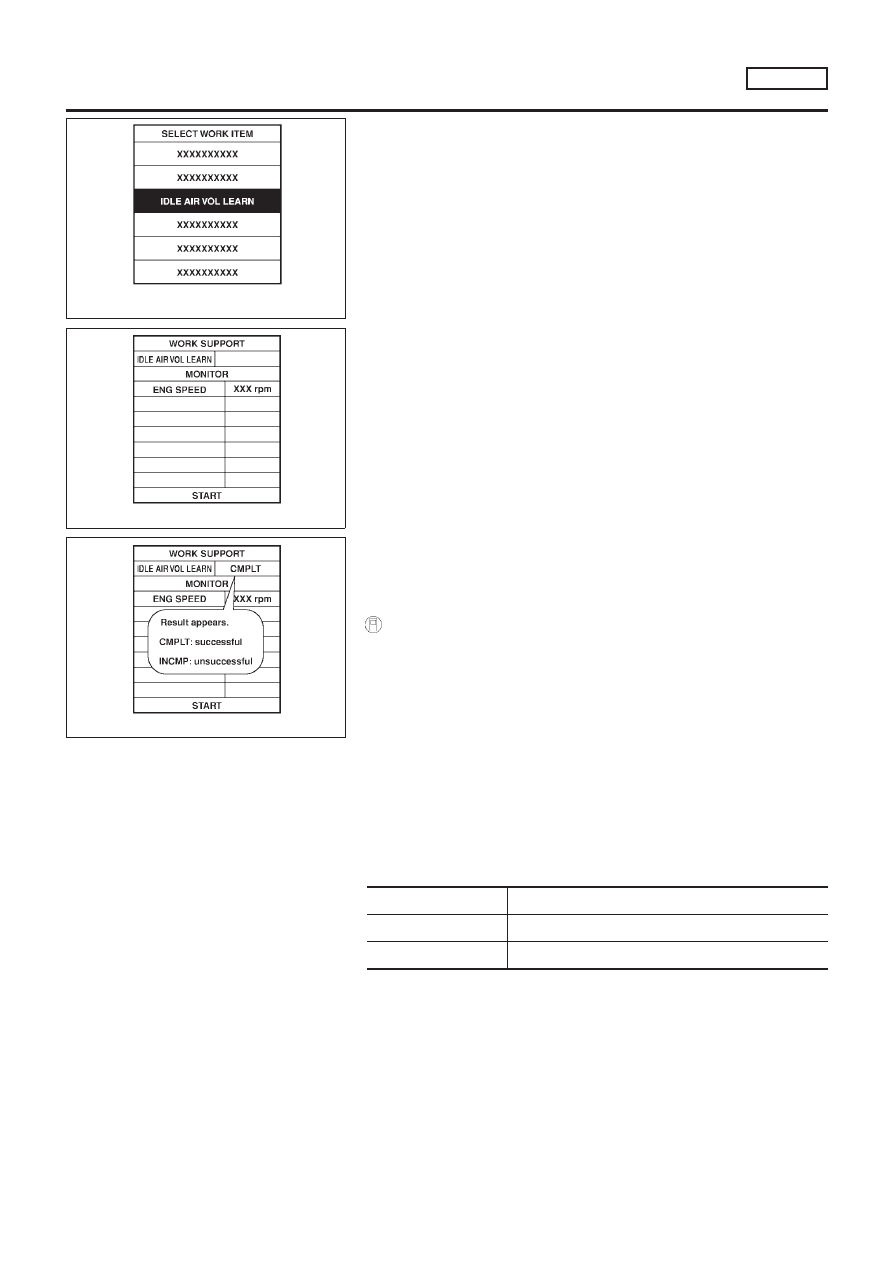Nissan Almera Tino V10 (2001 year). Manual - part 31

SEF217Z
SEF454Y
SEF455Y
Idle Air Volume Learning
NLEC0562
DESCRIPTION
NLEC0562S01
“Idle Air Volume Learning” is an operation to learn the idle air vol-
ume that keeps each engine within the specific range. It must be
performed under any of the following conditions:
+
Each time IACV-AAC valve, throttle body or ECM is replaced.
+
Idle speed or ignition timing is out of specification.
PRE-CONDITIONING
NLEC0562S02
Before performing “Idle Air Volume Learning”, make sure that all of
the following conditions are satisfied.
Learning will be cancelled if any of the following conditions are
missed for even a moment.
+
Battery voltage: More than 12.9V (At idle)
+
Engine coolant temperature: 70 - 99°C (158 - 210°F)
+
PNP switch: ON
+
Electric load switch: OFF
(Air conditioner, headlamp, rear window defogger)
On vehicles equipped with daytime light systems, set lighting
switch to the 1st position to light only small lamps.
+
Cooling fan motor: Not operating
+
Steering wheel: Neutral (Straight-ahead position)
+
Vehicle speed: Stopped
+
Transmission: Warmed-up
M/T models, drive vehicle for 10 minutes.
OPERATION PROCEDURE
NLEC0562S03
With CONSULT-II
NLEC0562S0301
1.
Start engine and warm it up to normal operating temperature.
2.
Check that all items listed under the topic “PRE-CONDITION-
ING” (previously mentioned) are in good order.
3.
Turn ignition switch “OFF” and wait at least 9 seconds.
4.
Start the engine and let it idle for at least 28 seconds.
5.
Select “IDLE AIR VOL LEARN” in “WORK SUPPORT” mode.
6.
Touch “START” and wait 20 seconds.
7.
Make sure that “CMPLT” is displayed on CONSULT-II screen.
If “INCMP” is displayed, “Idle Air Volume Learning” will not be
carried out successfully. In this case, find the cause of the
problem by referring to the NOTE below.
8.
Rev up the engine two or three times. Make sure that idle
speed and ignition timing are within specifications.
ITEM
SPECIFICATION
Idle speed
700
±
50 rpm
Ignition timing
8
±
2° BTDC
BASIC SERVICE PROCEDURE
QG18DE
Inspection Procedure (Cont’d)
EC-57